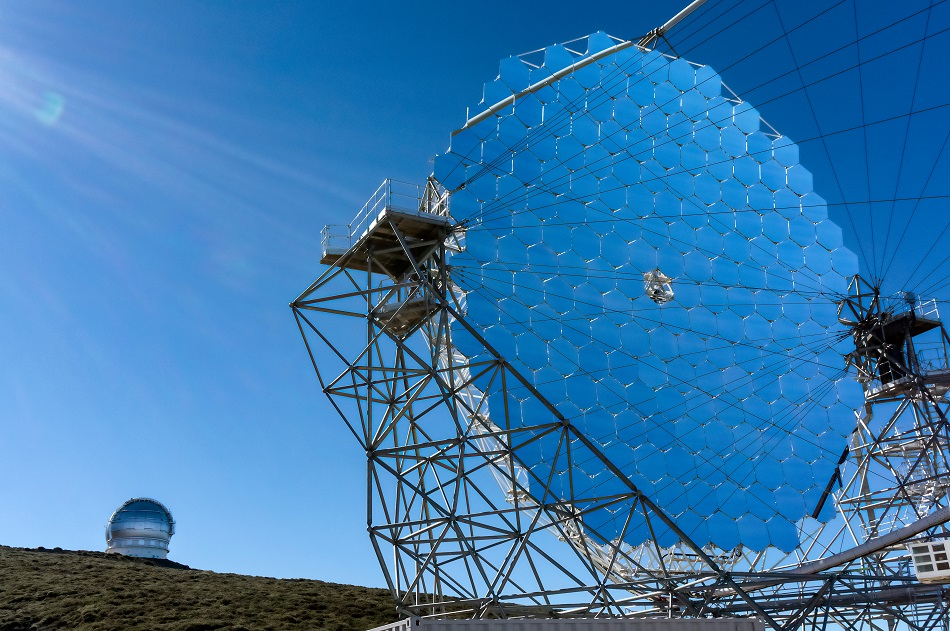
Image Credit: gopixa/Shutterstock.com
The Very Large Telescope sits atop Cerro Paranal, a mountain over 2,600 m tall in the Atacama Desert in Northern Chile. The Paranal region enjoys 320 clear nights per year, making it the ideal place for observing the night sky.
Operated by the European Southern Observatory, the Very Large Telescope (VLT) consists of four individual telescopes each with an 8.2 m diameter primary mirror coated with an aluminum alloy. Named Antu, Kueyeh, Melipal, and Yepan – meaning Sun, Moon, Southern Cross and Evening Star in Mapuche, a language spoken in south-central Chile – the telescopes operate at visible and infrared wavelengths.
The four telescopes are generally used separately but their power can be combined to achieve a higher angular resolution, which describes its ability to distinguish the smallest details of an object and a major determinant of image resolution. The telescopes can detect objects four billion times fainter than the human eye can see.
The VLT is the most productive ground-based facility for astronomy – only Hubble has produced more scientific papers among telescopes operating at the visible wavelength. It took the first-ever direct image of an exoplanet and tracked individual stars moving around the supermassive black hole at the center of the Milky Way.
Metallic Mirrors
The first metallic mirrors were developed by Isaac Newton and William Herschel who utilized bronze speculum mirrors. This was then replaced with silvered glass around 1857 because of its high reflectivity and ease to re-polish. By 1967 these too had been replaced by aluminum mirrors and became widely used in telescopes following ESO studies in the 1980s.
Most large telescope mirrors are coated in aluminum, a relatively tough material that can survive in the harsh environments in which observatories are situated. And unlike ordinary household mirrors, these have a much superior optical quality.
Magic Mirrors
The telescope is pointed at a star of interest, light from this star is first reflected off the primary mirror and concentrated towards a secondary mirror, before being sent to one of the three instruments of the telescope.
The mirror’s design helps astronomers gain the best possible image by employing adaptive optics – a continual adjustment of the mirror – and adaptive optics. When light travels from a star to Earth, the atmosphere interferes and causes turbulence, which appears as the twinkling of a star and blurry images; adaptive optics use a bright reference star close to the object being studied to measure the blurring. An adjustable mirror then compensates for it.
Mirror Make up
Each of the VLT’s four telescopes has a 22-tonne 8.2 m Zerodur primary mirror and a secondary mirror of beryllium.
Zerodur is a trademark of Schott AG which has been used for several large telescope mirrors. It is a lithium aluminosilicate glass-ceramic which has a low coefficient of thermal expansion – It has a tendency to change shape, area, and volume in response to altering temperature.
The mirrors are incredibly thin, thinner than a human hair, so can be quite floppy and are therefore supported by a ceramic plate. Despite their fragile nature, they can weather the potentially harmful effects of being manhandled. They are also highly polished, and although aluminum is slightly rougher than glass, it does not affect the final optical quality.
Every 18 months, the mirrors need to be cleaned of surface dust and debris, which can degrade the quality of observations. The old surface is removed with acid before the mirror is washed and recoated in aluminum.
Next-Generation Mirrors
The Very Large Telescope will be superseded by the Extremely Large Telescope, which will be situated on Cerro Amazones, also in the Atacama Desert. Like the VLT, its primary mirrors will be made of Zerodur, and the five telescopes will focus on the visible and near-infrared portion of the electromagnetic spectrum. It is still under construction, due to be operational in 2025.
References and Further Reading
Disclaimer: The views expressed here are those of the author expressed in their private capacity and do not necessarily represent the views of AZoM.com Limited T/A AZoNetwork the owner and operator of this website. This disclaimer forms part of the Terms and conditions of use of this website.